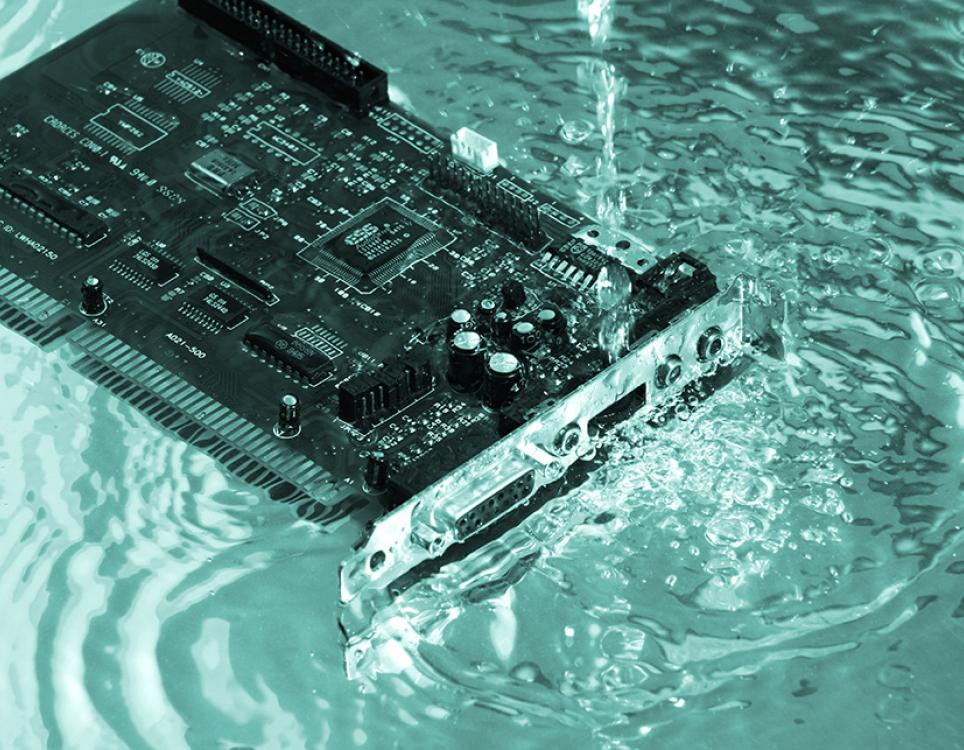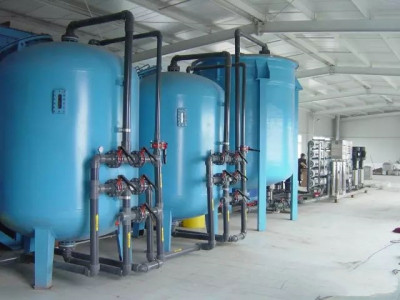Common Water Treatment Processes in the Semiconductor Industry
Osmose Reversa (RO)
Osmose Reversa (RO) is a crucial water treatment process widely used in the semiconductor industry. It plays a vital role in ensuring the production of high-quality and reliable semiconductor products.
RO works by applying pressure to a solution, forcing water molecules through a semi-permeable membrane while leaving behind dissolved solids and contaminants. This process effectively removes impurities such as salts, minerals, organic compounds, and bacteria from the water.
The importance of RO in the semiconductor industry lies in its ability to provide ultra-pure water that meets the stringent quality requirements of semiconductor manufacturing processes. The purity level achieved by RO systems is typically in the range of 99% to 99.9%, making it an essential step in achieving high product yield and performance.
By removing impurities, RO helps minimize contamination risks during various stages of semiconductor fabrication. Contaminants such as particles, ions, and organic substances can adversely affect the performance and reliability of semiconductor devices. RO ensures that these contaminants are effectively eliminated from the water supply, reducing the likelihood of defects or failures in the final products.
Furthermore, compliance with industry standards and regulations is another key aspect facilitated by RO systems. The semiconductor industry has strict guidelines for water purity levels to ensure consistent product quality across different manufacturers. By employing RO technology, semiconductor companies can meet these standards and maintain their reputation for delivering reliable and high-performance devices.
RO systems are typically part of a larger water treatment setup that includes pre-treatment systems such as sediment filters, activated carbon filters, and multimedia filters. These pre-treatment steps remove larger particles and chlorine from the feedwater before it enters the RO system. This helps prolong the lifespan of the RO membranes by preventing fouling or damage caused by suspended solids or chemicals.
Deionização (DI)
Deionization (DI) is a crucial water treatment process widely used in the semiconductor industry. This process plays a vital role in ensuring the quality and reliability of water used in various manufacturing processes. In this section, we will explore the significance of deionization, its working principle, and its application in the semiconductor industry.
Deionization is primarily aimed at removing dissolved ions from water to achieve high levels of purity. It involves passing water through specially designed ion exchange resins that attract and remove charged particles such as cations (positively charged ions) and anions (negatively charged ions). The resin beads are typically made from polystyrene or other similar materials with functional groups that can bind to ions.
The deionization process consists of two main stages: the cation exchange bed and the anion exchange bed. In the cation exchange bed, positively charged ions such as calcium, magnesium, sodium, and iron are exchanged for hydrogen ions. Similarly, in the anion exchange bed, negatively charged ions like chloride, sulfate, nitrate, and bicarbonate are exchanged for hydroxide ions. As a result of these exchanges, water is effectively stripped of most dissolved impurities.
In the semiconductor industry, deionized water is essential for several reasons. Firstly, it ensures product quality by eliminating contaminants that could negatively impact semiconductor manufacturing processes. Even trace amounts of impurities can have detrimental effects on the performance and reliability of electronic components.
Secondly, deionized water minimizes contamination risks during various fabrication steps. Semiconductor devices are extremely sensitive to even minute particles or chemical residues present in water. By using deionized water throughout the manufacturing process, manufacturers can significantly reduce the risk of defects caused by particle contamination or chemical interactions.
Lastly, compliance with industry standards and regulations is another critical aspect of using deionized water in semiconductor production. The International Technology Roadmap for Semiconductors (ITRS) sets stringent purity requirements for process water used in semiconductor manufacturing. Deionization is one of the key processes that enables companies to meet these standards and ensure consistent quality across their operations.
To implement deionization effectively, semiconductor facilities utilize DI systems, which typically consist of resin beds, regeneration tanks, and monitoring equipment. These systems are designed to handle high flow rates while maintaining the required purity levels. Regular monitoring and maintenance of DI systems are essential to ensure optimal performance and prevent any potential issues.
Ultrafiltração (UF)
Ultrafiltração (UF) is a crucial water treatment process widely used in the semiconductor industry. It plays a significant role in achieving the high purity levels required for various manufacturing processes. UF is particularly effective in removing suspended solids, colloidal particles, bacteria, and some macromolecules from water sources.
One of the primary advantages of UF is its ability to operate at relatively low pressures compared to other filtration methods. This not only reduces energy consumption but also minimizes the risk of damaging delicate components within the system. UF membranes have pore sizes ranging from 0.01 to 0.1 microns, allowing them to selectively reject particles and microorganisms while allowing water molecules to pass through.
By employing UF as part of the water treatment process, semiconductor manufacturers can ensure that their products meet stringent quality and reliability standards. The removal of suspended solids and contaminants helps prevent equipment fouling and corrosion, which can compromise product performance and lifespan.
Moreover, UF aids in minimizing contamination risks by effectively removing particulates that could potentially interfere with wafer production or cause defects on the surface of semiconductor devices. This is particularly crucial in ultra-clean environments where even minute impurities can have a significant impact on yield and product quality.
In addition to meeting product requirements, the semiconductor industry must comply with strict industry standards and regulations regarding water quality. UF serves as an essential step in achieving these standards by providing an efficient means of reducing total organic carbon (TOC) levels in water sources. By consistently maintaining low TOC levels, semiconductor manufacturers can ensure compliance with regulatory requirements and avoid potential fines or penalties.
The implementation of UF systems requires careful consideration of factors such as feedwater quality, membrane selection, system design, and operational parameters. Pre-treatment processes such as sediment filters and activated carbon filters are often employed before UF to remove larger particles and organic matter that could foul or damage the membranes.
Eletrodeionização (EDI)
Eletrodeionização (EDI) is a widely used water treatment process in the semiconductor industry. It is an advanced technology that combines aspects of both ion exchange and electrodialysis to produce high-purity water for various applications.
In the EDI process, feedwater passes through a series of ion exchange resin beds and ion-selective membranes. These components work together to remove dissolved ions from the water, resulting in exceptionally pure water with low conductivity.
One of the key advantages of EDI is its continuous operation. Unlike traditional ion exchange systems that require periodic regeneration, EDI operates continuously without the need for chemicals or downtime. This makes it a cost-effective solution for high-volume water treatment applications in the semiconductor industry.
Another benefit of EDI is its ability to remove a wide range of contaminants from the feedwater. It effectively removes dissolved ionic impurities such as salts, minerals, and heavy metals, ensuring that the treated water meets stringent purity requirements. This is crucial in semiconductor manufacturing processes where even trace amounts of impurities can negatively impact product quality and reliability.
EDI also offers environmental benefits compared to other water treatment methods. It eliminates the need for chemical regeneration agents, reducing chemical usage and waste generation. Additionally, it requires minimal operator intervention and has a small footprint, making it an efficient and space-saving option for water treatment facilities.
When implementing an EDI system, proper system design and sizing are essential to ensure optimal performance. Factors such as feedwater quality, flow rate, and desired purity level must be considered during the design phase. Regular maintenance and monitoring are also critical to prevent fouling or scaling issues that could affect system efficiency.




